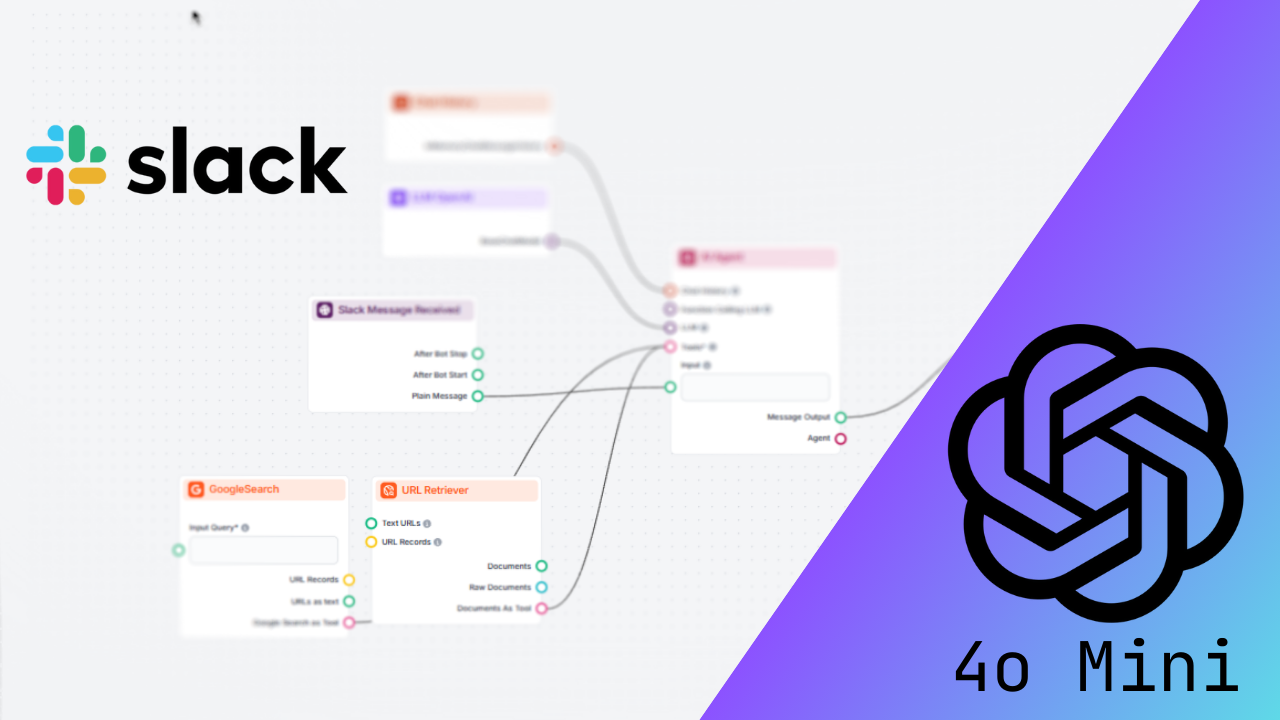Transform Slack with AI-Powered Slackbots Using GPT-O1 mini via Flowhunt
Imagine having a personal assistant embedded in your Slack workspace—a bot that responds to queries, fetches data, and performs various actions in an instant. With GPT-O1 mini integrated through Flowhunt, this vision becomes a reality. From automating repetitive tasks to streamlining workflows, this integration can revolutionize team collaboration.
If you’re new to Slackbots, don’t worry—this guide has you covered. We’ll take you through setting up the Slack integration in Flowhunt, building your first AI-powered flow, and discovering how this combination can transform your team’s productivity. By the end, you’ll have a powerful Slackbot ready to assist your team effectively.
Setting Up the Slack Integration
Before diving into creating flows, you’ll first need to connect Flowhunt to Slack. Here’s how:
- Navigate to the Integrations Tab
Log in to your Flowhunt.io account, and on your dashboard, click the Integrations tab. - Select Slack
Among the available integrations, choose Slack to start the setup process.

- Authorize Slack Access
You’ll be redirected to Slack’s login page. Enter your Slack credentials and workspace URL.(Need help finding your workspace URL? Check the top-left corner of your Slack app.)

- Grant Necessary Permissions
Approve the requested permissions, enabling Flowhunt to function as a Slackbot in your workspace. These permissions allow the bot to read messages, respond, and interact in channels.That’s it! Your Slack integration is live, and you’re ready to create your first Slackbot flow.

Building a Slackbot Flow

Now that your integration is ready, it’s time to build your first AI-powered flow for Slack. Follow these steps:
1. Add the “Slack Message Received” Component
This component acts as the starting point of your flow, detecting messages in Slack and triggering responses.
- Configure the Channel and Workspace: Set the component to monitor a specific channel and workspace. For better organization, we recommend creating a dedicated channel (e.g.,
#ai-assistant). Alternatively, you can enable the bot to work in broader channels. - Enable “Only Trigger on Mention”: Prevent unnecessary responses by setting the bot to reply only when explicitly mentioned (e.g.,
@flowhunt).

2. Add the AI Agent Component
This component drives your Slackbot’s intelligence, allowing it to provide accurate and contextual responses.
- Backstory: Define the bot’s role—e.g., “You are a Slackbot assistant.”
- Goal: Instruct the AI to answer queries using all available tools and knowledge sources.

3. Enhance the AI Agent with Tools
Expand your bot’s functionality by integrating additional tools:
- Google Search Tool: Enables the bot to perform real-time web searches for queries.
- URL Retriever: Allows the bot to analyze and summarize shared links or documents.

Flowhunt supports various other tools to suit your specific needs, which you can explore and integrate as required.
4. Add the LLM OpenAI Component
The LLM OpenAI component provides robust natural language processing capabilities. With its advanced algorithms, it ensures the bot comprehends user queries and delivers precise, helpful responses. All you need to do is to choose the o1 mini model from

5. Add the “Slack Send Message” Component
This component sends the bot’s response back to Slack, completing the interaction.
- Configure the Channel and Workspace: Match these settings to the values used in the “Slack Message Received” component.

6. Save and Test Your Flow
Once your flow is complete:
- Save the flow in Flowhunt.
- Open Slack and go to the designated channel.
- Mention the bot (e.g.,
@flowhunt) and watch as it starts responding to queries.
Congratulations! Your Slackbot is now ready to assist your team.
Why Choose Flowhunt for Slackbots?
Integrating Flowhunt with Slack brings unmatched efficiency to your team’s workflow:
- Customizable: Tailor your Slackbot to handle specific tasks, such as answering FAQs, retrieving data, or managing team workflows.
- User-Friendly: Flowhunt’s drag-and-drop interface makes building complex workflows simple, even without technical expertise.
- Scalable: Expand your bot’s capabilities over time by adding tools and refining its functions.
- Productivity-Boosting: Automate repetitive tasks, freeing your team to focus on more impactful work.
Conclusion
With GPT-O1 mini via Flowhunt, your Slackbot can become an indispensable member of your team, transforming how you communicate and collaborate. From automating tasks to enhancing team efficiency, the possibilities are endless.
Visit Flowhunt.io today and experience the future of Slackbots!
Web Page Title Generator Template
Generate perfect SEO titles effortlessly with FlowHunt's Web Page Title Generator. Just input a keyword and get top-performing titles in seconds!




